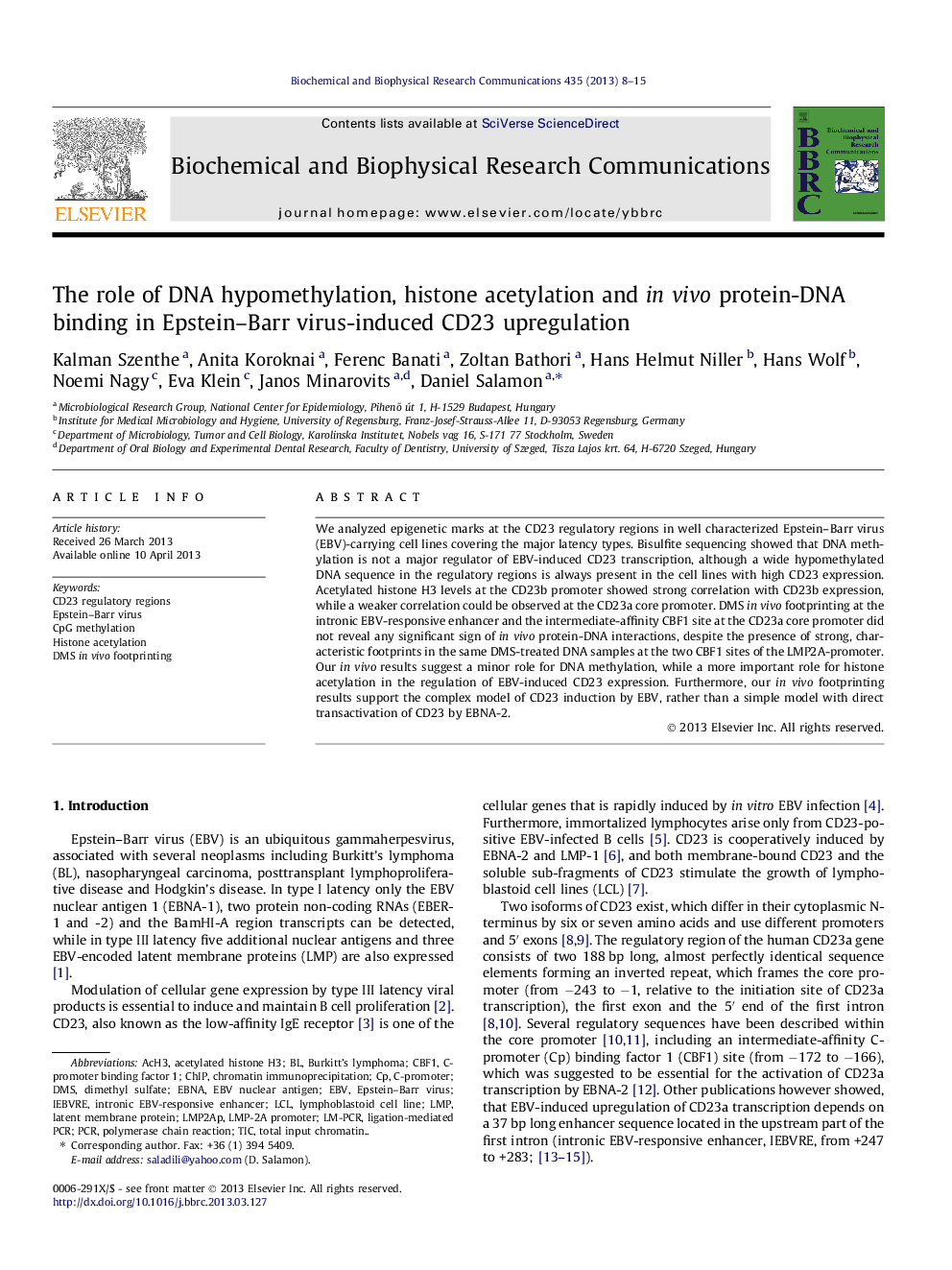| Article ID | Journal | Published Year | Pages | File Type |
|---|---|---|---|---|
| 1928781 | Biochemical and Biophysical Research Communications | 2013 | 8 Pages |
•DNA methylation is not a major regulator of EBV-induced CD23 transcription.•High level CD23 associates with wide hypomethylated area in CD23 regulatory regions.•Levels of AcH3 at the CD23b promoter correlate with the levels of CD23b mRNA.•No sign of in vivo protein-DNA interactions at the CBF1 site.•No sign of in vivo protein-DNA interactions at the intronic EBV-responsive enhancer.
We analyzed epigenetic marks at the CD23 regulatory regions in well characterized Epstein–Barr virus (EBV)-carrying cell lines covering the major latency types. Bisulfite sequencing showed that DNA methylation is not a major regulator of EBV-induced CD23 transcription, although a wide hypomethylated DNA sequence in the regulatory regions is always present in the cell lines with high CD23 expression. Acetylated histone H3 levels at the CD23b promoter showed strong correlation with CD23b expression, while a weaker correlation could be observed at the CD23a core promoter. DMS in vivo footprinting at the intronic EBV-responsive enhancer and the intermediate-affinity CBF1 site at the CD23a core promoter did not reveal any significant sign of in vivo protein-DNA interactions, despite the presence of strong, characteristic footprints in the same DMS-treated DNA samples at the two CBF1 sites of the LMP2A-promoter. Our in vivo results suggest a minor role for DNA methylation, while a more important role for histone acetylation in the regulation of EBV-induced CD23 expression. Furthermore, our in vivo footprinting results support the complex model of CD23 induction by EBV, rather than a simple model with direct transactivation of CD23 by EBNA-2.
